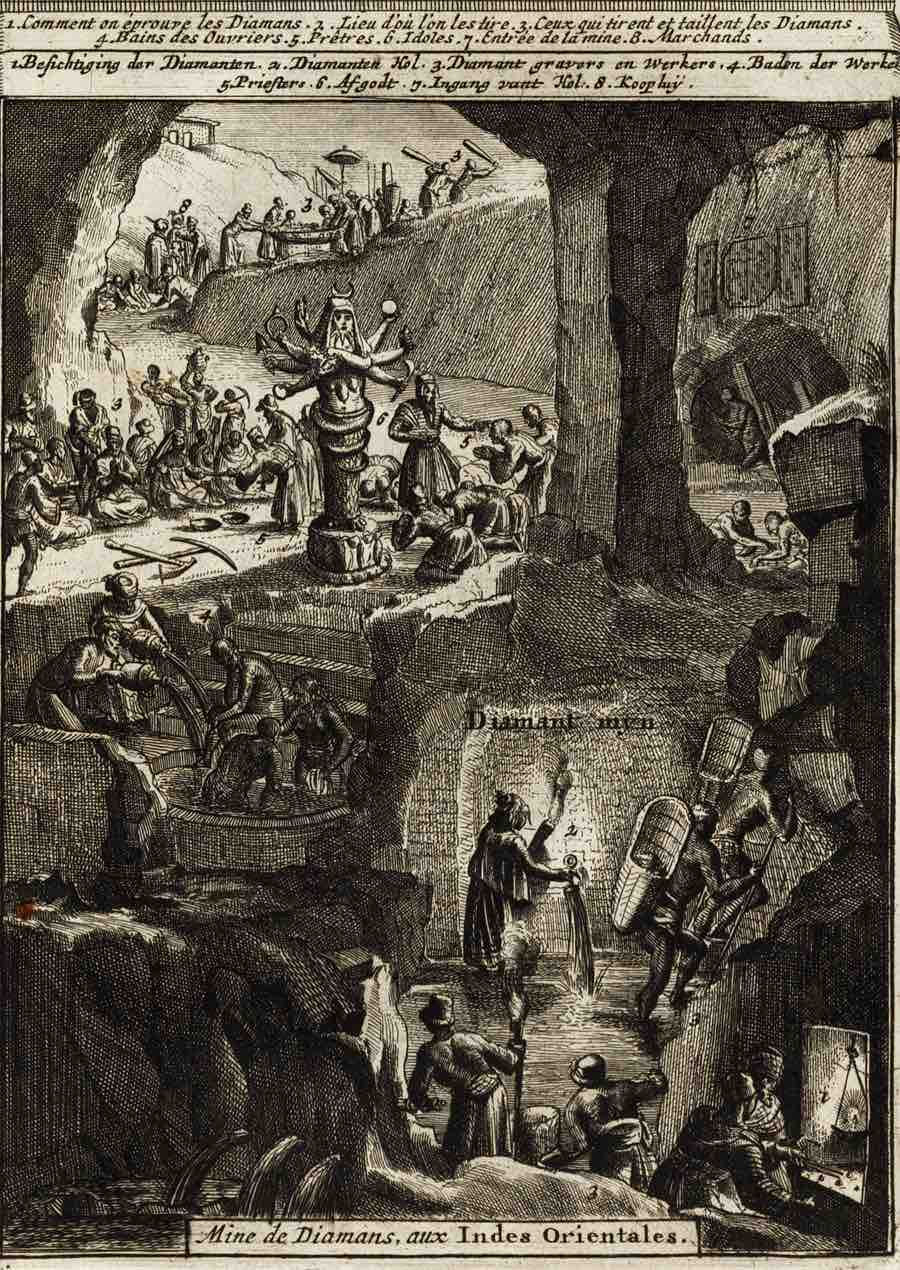Origins of the Diamond Trade
- de'Jems

- Aug 6, 2022
- 3 min read
Updated: Oct 19, 2022
Guess where diamonds were first found in the world? India!
That's right, as early as the 4th century BC, diamonds were found and mined in the Krishna Godavari delta of India, in an area that came to be known as Golconda (in the present-day states of Telangana & Andhra Pradesh).
Located about 15km away from Hyderabad, Golconda and its majestic fort became the capital of the Qutb Shahi dynasty, which established the fort as a diamond trading hub. This was thought to be the only source of diamonds until the 18th century, and hence became the diamond capital of the world for over 2000 years.

The diamonds of Golconda were known for their magnificent size and clarity, ranking very high on current grading standards due to the absence of nitrogen in them, which gave them the rare Type IIa designation. Their exceptional water-like quality made them the most sought-after diamonds in the world and was particularly made famous by travellers like Marco Polo, Jean-Baptiste Tavernier and Muhammad al-Idrisi.

Marco Polo visited India between 1292 - 1294 CE and famously wrote in his travelogue 'Il Milione' - ‘No country but India produces diamonds. Those which are brought to our part of the world are only the refuse, as it were, of the finer and larger stones. For the flower of the diamonds are all carried to the Great Khan and other kings and princes of the region. In truth, they possess all the treasures of the world.’

There were roughly 38 diamond mines in the Golconda region, within a radius of 100km - 200km of the fort. At its peak, the Golconda diamond mines employed over 65,000 miners at a time, who used different methods like tunnelling and open-cast mining, depending on the terrain and layout of each mine.

Mining diamonds was an extremely challenging and strenuous job, given the limited tools and resources available during that time. The miners dug shallow pits that were surrounded by walled enclosures, into which diamond-bearing rocks and gravel were poured. This was crushed using metal tools, to separate the diamond crystals from the soft rock that enveloped them. Water was then poured into the pits, after which the miners sifted the crushed rocks in baskets, and finally sorted the diamonds by hand. They then carried these diamonds to the Golconda Fort, which housed the diamond bazaar.

Around the fort and its bazaar, there was reported to be a settlement of around 1300 diamond merchants who were involved in trading raw diamonds. The area also housed several thousand artisans, who were engaged in cutting, polishing and embedding the diamonds into pieces of jewellery.
This primitive diamond bazaar attracted foreign traders and brokers from all over the world, who were eager to sell this exclusive gemstone to the elite, wealthy and royal families of Europe, China and North America.
The Golconda diamond mines produced some of the finest, rarest and most significant diamonds in the world, like the Koh-i-Noor, Beau Sancy, Nassak, Hope and Daria-i-Noor.

During the 18th century, diamond deposits began to deplete in the Golconda diamond mines. And around the same time, diamond deposits were discovered in Brazil, which then dominated the diamond market for almost 200 years. Later, major diamond deposits were found in South Africa, the Democratic Republic of Congo, Russia, Botswana and Australia.
Today, the diamond mines in Canada, Botswana and Russia are the major suppliers of high-quality diamonds to the world.
We hope you enjoyed reading this brief history of the diamond trade and its origins. Now you know why Indians love 'bling', we're the ones who introduced it to the world. :)
Please drop us a comment if you like our blog, we would love to hear from you!
Cheers,
NR.
Fun Fact: Although India no longer produces diamonds, Today, 9 out of every 10 diamonds mined in the world, are cut and polished in India. Surat, in the state of Gujarat, is now the diamond-cutting hub of the world. So if you do manage to find a rough diamond on the beach, you know where to go with it. ;)







Comments